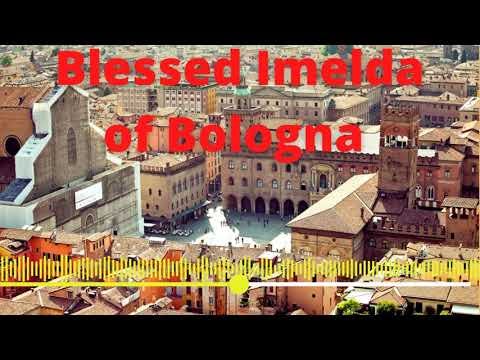Bologna is a very famous city in Italy, famous for that matter, in all Europe. It boasts Europeís oldest University. At one time, in the 14th Century, there were 10,000 students attending the University of Bologna. During this century, Marconi worked at that University on his wireless, which became the Radio. Because the city has always attracted intelligent people, freethinking has been a way of life for inhabitants of Bologna. Freethinking breeds agnosticsm and atheism, as well as anarchy and radicalism. Bologna has been known for all of the above. In the 1970ís, Bologna was a hotbed of a homegrown breed of terrorists, the Red Brigade, along with Turin, Padua and Milan. On the other hand, Bologna is the resting place of many saints of the Church, one of which is St. Dominic, the founder of the Dominican Order, and co-reformer of the Church of the Thirteenth Century, with St. Francis of Assisi. Another is St. Catherine, whose incorrupt body is seated in a small church in Bologna. During World War II, the entire church was bombed out, except for the little Chapel which is the Sanctuary of the saint.
There is also, in St. Sigismondo, a little Parish Church near the University, the body of a very special little girl, Blessed Imelda Lambertini named the Protectress of First Holy Communicants by Pope St. Pius X, .
She was born of a very noble Bolognese family. Her father was Count Egano Lambertini. From the time she was a small child, she was known fo her piety and spirituality. It was obvious that she would devote her life to God. It was not known that it would be such a short life. Imelda was a joy to her parents. She was a pretty little girl, but things of the world had no value for her. She spent much time by herself in prayer, in various corners of the house where she woul not be distracted. It was no surprise when she asked her parents for permission at age nine to enter into the religious life. She was placed in the Dominican Convent of Santa Maria Maddalena in Valdipietra. She was loved very much by the nuns in the Convent, as they watched her grow in the spiritual life. Being the youngest in the community, and probably the most loved, Imelda was treated as a very special gift from the Lord. The nuns could tell that this was no ordinary child. She was extremely happy with them, taking to the community life immediately; she was an example to many of the older nuns. Imelda had an all consuming love for Our Lord Jesus in the Eucharist.
She longed to be able to take part in Communion, but at that time she was not able to, because of her age. ( In the 14th Century, children were not allowed to receive Communion until the age of 12) When the other sisters received the Eucharist at Mass, she yearned to be able to take part in the Eucharistic Feast. She grieved for this one gift of the Lord that was refused her. She was heard to have said ìTell me, can anyone receive Jesus into his heart and not die?î But the Lord had a special gift for her, a Eucharistic Miracle. It took place on the feast of the Ascension in 1333. The community was at Mass. Blessed Imelda prayed fervently during this particular Mass. When the Mass ended, the sisters proceeded to leave the Church. Imelda stayed behind to continue praying. The sisters turned to call Imelda.
This article is from Miracles of the Eucharist Book I Best Seller



